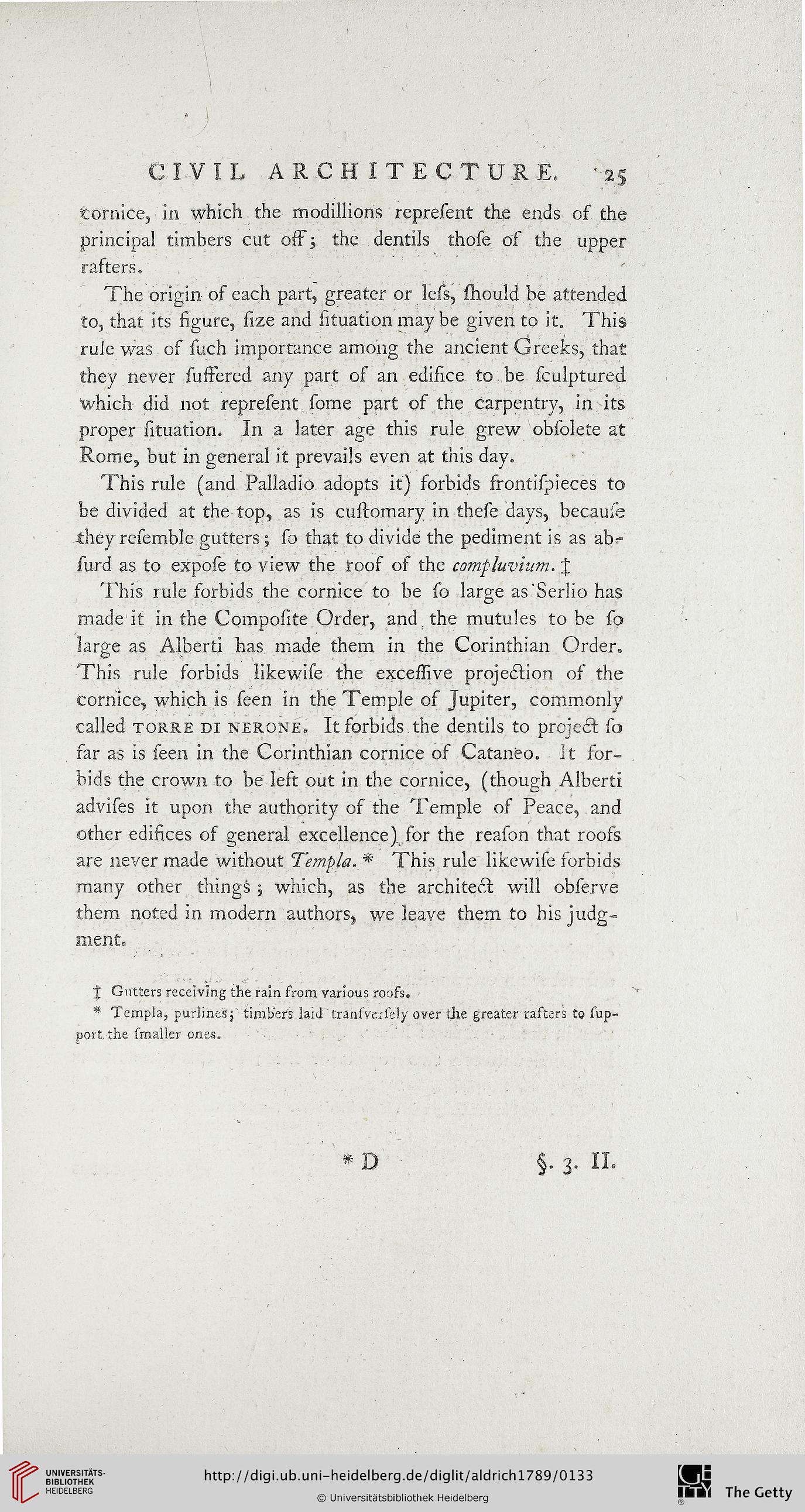CIVIL ARCHITECTURE. '2$
Cornice, in which the modillions represent the ends of the
principal timbers cut off; the dentils those of the upper
rafters.
The origin of each part, greater or less, should be attended
to, that its figure, size and lituation may be given to it. This
rule was of such importance among the ancient Greeks, that
they never suffered any part of an edifice to be sculptured
Which did not represent some part of the carpentry, in its
proper situation. In a later age this rule grew obsolete at
Rome, but in general it prevails even at this day.
This rule (and Palladio adopts it) forbids frontispieces to
be divided at the top, as is customary in these days, because
they resemble gutters; so that to divide the pediment is as ab-
surd as to expose to view the roof of the compluvium. J
This rule forbids the cornice to be so large as'Serlio has
made it in the Composite Order, and the mutules to be so
large as Alberti has made them in the Corinthian Order,
This rule forbids likewile the excessive projection of the
cornice, which is seen in the Temple of Jupiter, commonly
called torre di nerone. It forbids the dentils to prcjeCf so
sar as is seen in the Corinthian cornice of Cataneo. It for-
bids the crown to be left out in the cornice, (though Alberti
advises it upon the authority of the Temple of Peace, and
other edifices of general excellence) for the reason that roofs
are never made without Templa,* This rule likewise forbids
many other things ; which, as the architect will observe
them noted in modern authors, we leave them to his judg-
ment.
% Gutters receiving the rain from various roofs.
* Templa, purlines; timbers laid transversely over the greater rasters to sup-
portthe smaller ones.
* D
§• 3- II.
Cornice, in which the modillions represent the ends of the
principal timbers cut off; the dentils those of the upper
rafters.
The origin of each part, greater or less, should be attended
to, that its figure, size and lituation may be given to it. This
rule was of such importance among the ancient Greeks, that
they never suffered any part of an edifice to be sculptured
Which did not represent some part of the carpentry, in its
proper situation. In a later age this rule grew obsolete at
Rome, but in general it prevails even at this day.
This rule (and Palladio adopts it) forbids frontispieces to
be divided at the top, as is customary in these days, because
they resemble gutters; so that to divide the pediment is as ab-
surd as to expose to view the roof of the compluvium. J
This rule forbids the cornice to be so large as'Serlio has
made it in the Composite Order, and the mutules to be so
large as Alberti has made them in the Corinthian Order,
This rule forbids likewile the excessive projection of the
cornice, which is seen in the Temple of Jupiter, commonly
called torre di nerone. It forbids the dentils to prcjeCf so
sar as is seen in the Corinthian cornice of Cataneo. It for-
bids the crown to be left out in the cornice, (though Alberti
advises it upon the authority of the Temple of Peace, and
other edifices of general excellence) for the reason that roofs
are never made without Templa,* This rule likewise forbids
many other things ; which, as the architect will observe
them noted in modern authors, we leave them to his judg-
ment.
% Gutters receiving the rain from various roofs.
* Templa, purlines; timbers laid transversely over the greater rasters to sup-
portthe smaller ones.
* D
§• 3- II.





